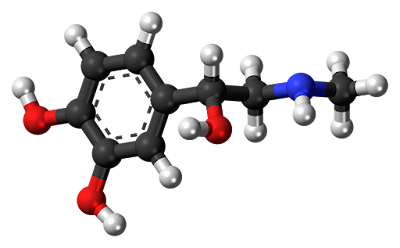Persamaan Gas Ideal – Kemolaran Larutan
Setelah sebelumnya kita belajar mengenai Volume Molar Gas , kali ini kita akan belajar tentang Persamaan Gas Ideal dan Kemolaran Larutan Volume gas pada suhu dan tekanan tertentu dapat dihitung menggunkan persamaan sebagai berikut \[PV=nRT\] Disebut sebagai Persamaan Gas Ideal dengan
- P = Tekanan Gas (atmosfer)
- V = Volume Gas (liter)
- n = Jumlah mol gas (mol)
- R = Tetapan Gas ($0,082$ liter atm / mol K)
- T = Suhu Mutlak Gas (Kelvin)
Bila ingin dipakai untuk mencari volume gas, persamaan tersebut di atas dapat disusun ulang menjadi \[V=\frac{nRT}{P}\]
Selanjutnya kita bahas tentang Kemolaran Larutan Campuran homogen dari dua jenis atau lebih zat disebut $Larutan$. Contoh larutan adalah sirup dan air laut. Sedikit banyaknya zat terlarut dalam larutan menentukan kepekatan larutan. Larutan dengan banyak zat terlarut disebut larutan pekat, sebaliknya, larutan yang mengandung hanya sedikit zat terlarut disebut larutan encer. Salah satu cara menentukan secara fisis mengenai kepekatan larutan dalam ilmu kimia adalah $Kemolaran$, disimbolkan dengan $M$. Kemolaran menyatakan jumlah mol zat terlarut dalam tiap volume (liter) larutan, atau dalam satuan lain, menyatakan jumlah milimol zat terlarut dalam tiap volume (mililiter) larutan.
 |
| Kepekatan Larutan dinyatakan dalam Molaritas |
- M = Kemolaran Larutan (mol/Liter atau molar)
- n = Jumlah mol (mol)
- V = Volume Larutan (Liter)
Satuan kemolaran adalah $mol/Liter$ atau $milimol/miliLiter$. Sebagai contoh bila kita lihat sebuah larutan tersimpan dalam gelas kimia dengan keterangan $NaCl$ 0,2 M, artinya dalam setiap satu Liter larutan $NaCl$ itu terdapat 0,2 mol. Nilai mol sebanyak 0,2 mol dari $NaCl$ memiliki arti pula terdapat 11, 7 gram $NaCl$ dari persamaan $m=n.M_{r}$. Dapat berarti juga dalam satu miliLiter larutan $NaCl$ itu terdapat 0,2 milimol. Nilai mol sebanyak 0,2 milimol dari $NaCl$ memiliki arti pula terdapat 11, 7 miligram $NaCl$. Salah satu keuntungan atau nilai tambah apabila konsentrasi larutan dinyatakan dalam kemolaran adalah kemudahan untuk mengetahui jumlah mol zat terlarut dalam volume tertentu larutan. Bila disusun ulang persamaan kemolaran larutan menjadi \[n=V\,x\,M\] Jika V dalam Liter maka n dalam mol dan apabila V dalam miliLiter maka n dalam milimol. Lebih jelasnya simak contoh soal dan pembahasan berikut:






